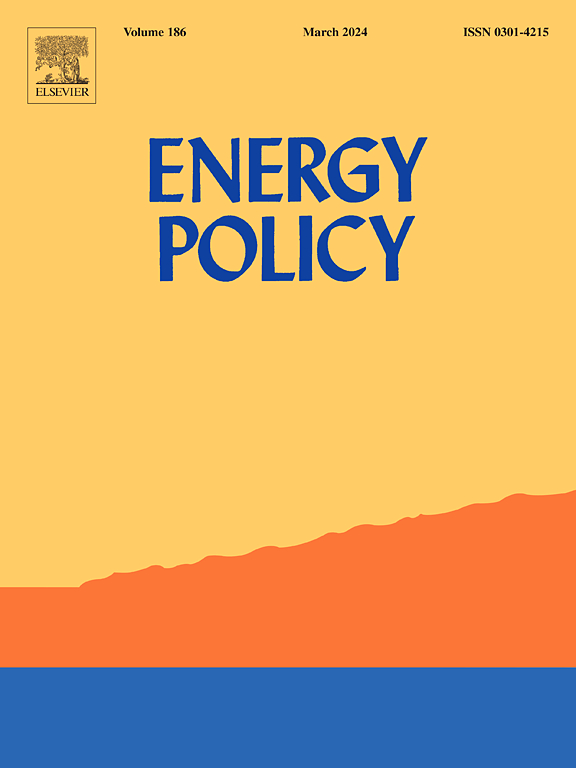转型期减排与能源供应区域协调:基于市场动态重构的时空适应性政策框架
IF 9.2
2区 经济学
Q1 ECONOMICS
引用次数: 0
摘要
作为全球碳中和进程的核心领域,电力系统的有序转型面临着能源与环境协调的挑战。然而,多区域发电商并联机制的协调路径尚未根据市场状态进行系统调整。本研究以中国电力行业为例,构建了考虑区域异质性的碳市场与电力市场耦合运行框架,并提出响应-趋势-积累-形状机制重构和转化市场耦合趋势,以协调碳配额和容量补偿机制的运行。研究表明,协调机制可在实现综合目标的基础上,在2021 - 2060年压缩15亿吨碳排放空间,并可根据区域转型特点分阶段调节不同机制的实施力度。最后,提出了灵活调整碳配额基准值和差异化产能补偿政策的政策建议,以实现异质区域条件下碳减排与能源供应的平衡。本文章由计算机程序翻译,如有差异,请以英文原文为准。
Regional coordination for emission reduction and energy supply in transition: A spatiotemporally adaptive policy framework based on markets dynamic reconstruction
As a core area of the global carbon neutrality process, the orderly transition of the power system faces the challenge of reconciling energy and environmental aspects. However, the coordination paths of parallel mechanisms for multi-regional power producers have not yet been systematically adjusted based on market states. Taking China's power sector as an example, this study constructs a framework for the coupled operation of the carbon market and the power market considering regional heterogeneity and proposes the Response-Trend-Accumulation-Shap mechanism to reconstruct and transform the market coupling trend to coordinate the operation of the carbon quota and capacity compensation mechanisms. The study shows that the coordination mechanism can compress the carbon emission space by 1.5 billion tons from 2021 to 2060 based on achieving the integrated target, and can regulate the implementation strength of different mechanisms in phases according to regional transformation characteristics. Finally, policy proposals are made to flexibly adjust the benchmark value of carbon quotas and differentiate capacity compensation policies, to achieve a balance between carbon emission reduction and energy supply under heterogeneous regional conditions.
求助全文
通过发布文献求助,成功后即可免费获取论文全文。
去求助
来源期刊

Energy Policy
管理科学-环境科学
CiteScore
17.30
自引率
5.60%
发文量
540
审稿时长
7.9 months
期刊介绍:
Energy policy is the manner in which a given entity (often governmental) has decided to address issues of energy development including energy conversion, distribution and use as well as reduction of greenhouse gas emissions in order to contribute to climate change mitigation. The attributes of energy policy may include legislation, international treaties, incentives to investment, guidelines for energy conservation, taxation and other public policy techniques.
Energy policy is closely related to climate change policy because totalled worldwide the energy sector emits more greenhouse gas than other sectors.
 求助内容:
求助内容: 应助结果提醒方式:
应助结果提醒方式:


